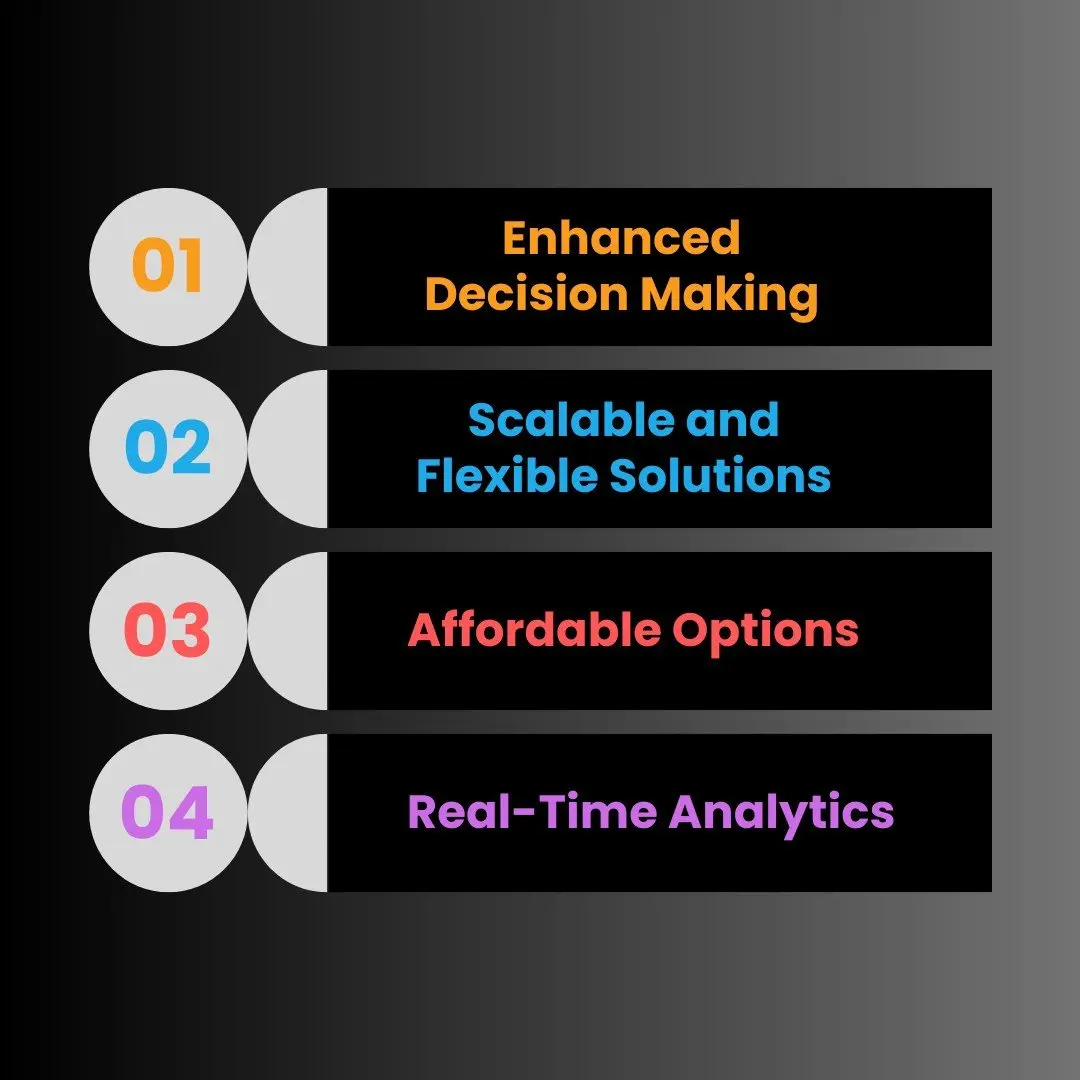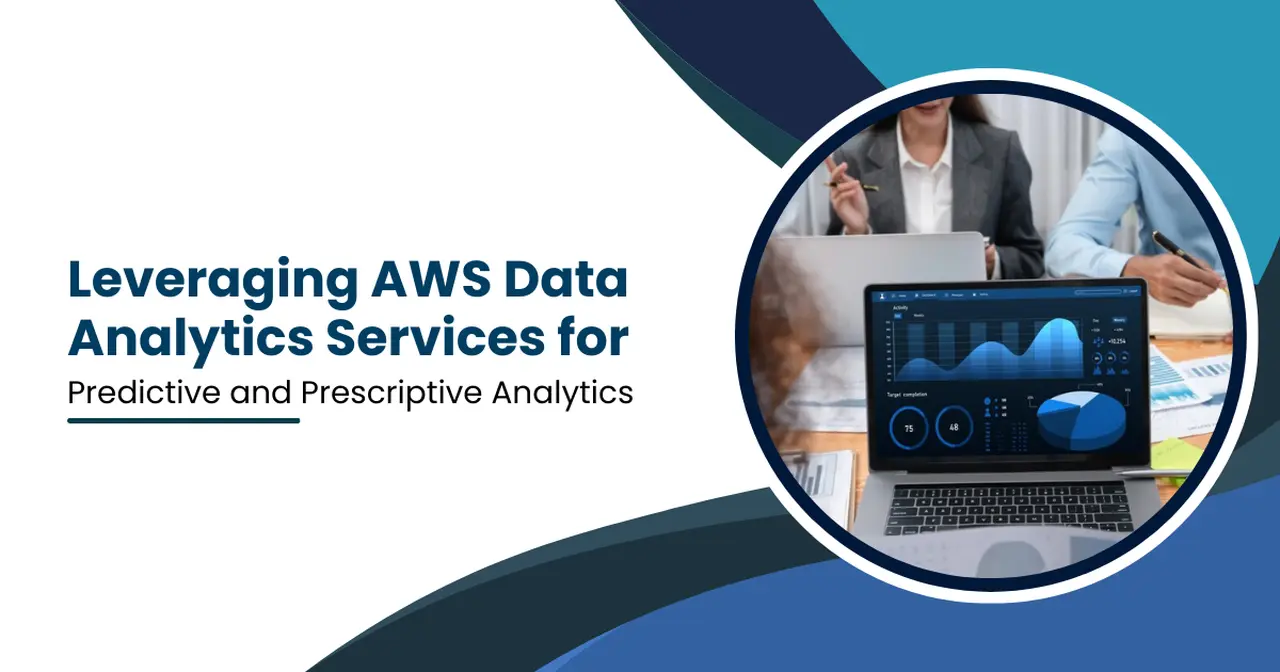In today’s fast-paced business environment, companies are increasingly relying on data to make smarter, faster decisions. AWS Data Analytics Services have emerged as one of the most effective solutions for businesses looking to gain insights from vast amounts of data. In fact, over 50% of companies are using cloud analytics platforms like AWS to drive their decision-making processes. By integrating AWS Data Analytics, organizations can engage in predictive and prescriptive analytics, helping them predict future outcomes and optimize their strategies.
What Are AWS Data Analytics Services?
Amazon Web Services (AWS) offers a suite of tools designed to help businesses manage, analyze, and visualize their data. AWS provides powerful services such as Amazon Redshift, AWS Glue, Amazon Kinesis, and AWS Quick Sight, which can handle everything from data ingestion to advanced analytics.
AWS Data Analytics services allow companies to ingest, process, and analyze massive datasets with ease. These tools facilitate the generation of insights in real time, enabling organizations to make faster, more informed decisions. But what sets AWS apart is its ability to handle both predictive and prescriptive analytics, two key approaches that can significantly impact business strategy.
The Difference Between Predictive and Prescriptive Analytics
Before diving deeper into how AWS supports these two analytics techniques, it’s essential to understand the difference between predictive and prescriptive analytics.
Predictive Analytics: Anticipating Future Trends
Predictive analytics is the practice of using historical data to predict future trends. It involves the use of statistical algorithms, machine learning models, and data mining techniques to forecast potential outcomes. Predictive analytics helps businesses anticipate future events, such as customer behavior, sales trends, or market conditions, enabling them to prepare for what’s to come.
Prescriptive Analytics: Recommending Actions
On the other hand, prescriptive analytics goes a step further by not only predicting future outcomes but also recommending actions based on those predictions. Using techniques like optimization models, simulations, and scenario analysis, prescriptive analytics helps businesses determine the best course of action to achieve their goals, whether it’s improving customer engagement or maximizing operational efficiency.
How AWS Data Analytics Supports Predictive Analytics
AWS Data Analytics Services provide a robust set of tools that facilitate predictive analytics for businesses of all sizes.
AWS Data Lakes: Centralizing Data for Better Predictions
A critical component of any predictive analytics strategy is the availability of data. AWS offers AWS Lake Formation, a service that helps businesses build data lakes, centralizing their data in a secure and scalable manner. By collecting data from various sources, companies can analyze historical trends and build models to predict future outcomes.
For instance, retailers can use AWS to create a data lake where they store customer purchase history, social media data, and inventory data. By analyzing this data, they can predict future demand, optimize stock levels, and plan promotional strategies.
Also Read: Comparing Azure Analytics with AWS and Google Cloud: Which is Best for Your Business?
Amazon Sage Maker for Building Predictive Models
One of the standout services for predictive analytics in AWS is Amazon Sage Maker. This fully managed service allows businesses to build, train, and deploy machine learning models at scale. With Sage Maker, organizations can leverage their data to create sophisticated predictive models that can forecast a wide range of outcomes, from customer churn to sales forecasts.
Sage Maker includes built-in algorithms for time series forecasting, regression, classification, and more, making it easy for organizations to implement predictive analytics. By integrating Sage Maker with other AWS services like Amazon S3 (for data storage) and AWS Glue (for data integration), businesses can quickly build end-to-end predictive analytics pipelines.
Amazon Kinesis: Real-Time Predictive Insights
For businesses that need to analyze data in real-time, Amazon Kinesis is an essential tool. It allows organizations to capture, process, and analyze streaming data at scale. This is particularly useful for industries like finance, healthcare, and e-commerce, where the ability to predict outcomes in real-time can be the difference between success and failure.
For example, a financial institution might use Amazon Kinesis to monitor market data and make real-time predictions about stock prices, enabling them to react swiftly to changing market conditions.
How AWS Data Analytics Supports Prescriptive Analytics
While predictive analytics focuses on forecasting future events, prescriptive analytics helps businesses decide what actions to take based on those predictions. AWS Data Analytics Services provide the tools and capabilities needed to build sophisticated prescriptive analytics models.
Amazon Redshift: Optimizing Performance and Costs
Amazon Redshift is a fully managed data warehouse service that allows businesses to run complex queries and analyze large datasets quickly. By integrating prescriptive analytics models into Redshift, organizations can analyze past performance data, optimize operational efficiency, and make decisions on pricing, supply chain management, and resource allocation.
For example, an airline might use Amazon Redshift to analyze historical flight data, demand patterns, and operational costs. By doing so, they can prescribe optimal flight schedules, pricing strategies, and staffing requirements to maximize profitability.
AWS Glue: Data Preparation for Prescriptive Insights
To perform prescriptive analytics, businesses need high-quality, well-prepared data. AWS Glue is an ETL (Extract, Transform, Load) service that helps organizations clean and prepare their data for analysis. With Glue, businesses can integrate data from different sources, transform it into usable formats, and store it in Amazon Redshift or other analytics tools.
Once the data is ready, companies can apply prescriptive analytics models to identify optimal actions based on the available data. For example, manufacturers can use Glue to combine production data with supply chain metrics, helping them determine the best course of action to optimize inventory levels and production schedules.
AWS Cost Optimization: Real-Time Recommendations
AWS Cost Explorer is another essential tool for prescriptive analytics, specifically for cost optimization. AWS Cost Explorer uses historical usage data to provide prescriptive recommendations that help businesses optimize their cloud spending. By using this service, organizations can identify underutilized resources, optimize storage and compute usage, and reduce costs.
Also Read: Transform Your Business Intelligence with the Power of AWS Data Analytics Services
The Benefits of AWS Data Analytics for Businesses

Organizations that adopt AWS Data Analytics Services for predictive and prescriptive analytics can reap numerous benefits.
Improved Decision Making
By leveraging AWS Data Analytics, businesses gain actionable insights that drive better decision-making. With accurate forecasts and data-driven recommendations, companies can make more informed choices that improve their bottom line.
Scalability and Flexibility
AWS offers a scalable infrastructure that grows with your business. Whether you’re a small startup or a large enterprise, AWS Data Analytics services can handle your data needs, providing the flexibility to scale operations as required.
Cost-Effective Solutions
Many AWS Data Analytics services are pay-as-you-go, meaning businesses only pay for the resources they use. This cost-effective model enables companies to access advanced analytics tools without making hefty upfront investments.
Real-Time Insights
With AWS’s real-time data processing capabilities, businesses can make immediate decisions based on the latest data. This is particularly useful for industries like finance, healthcare, and e-commerce, where real-time insights are crucial for success.
Key Statistics on AWS Data Analytics Adoption
- 58% of organizations reported using AWS for their analytics needs in 2022.
- 84% of companies using AWS Data Analytics Services have seen improved decision-making and operational efficiency.
- 75% of businesses leveraging AWS Data Analytics have seen cost reductions through optimized cloud usage.
Conclusion
In conclusion, AWS Data Analytics Services are transforming the way businesses approach predictive and prescriptive analytics. By utilizing AWS’s powerful suite of tools, organizations can gain deeper insights into their data, predict future trends, and make data-driven decisions that optimize their operations. Whether you’re looking to forecast sales, improve customer experiences, or optimize resource allocation, AWS provides the infrastructure and tools to turn your data into a strategic asset.
As more companies continue to adopt cloud analytics solutions, AWS stands out as a leader in enabling businesses to harness the full potential of their data. By leveraging AWS Data Analytics, organizations can not only predict future outcomes but also take the right actions to improve their performance and stay ahead of the competition.



Leave a Comment